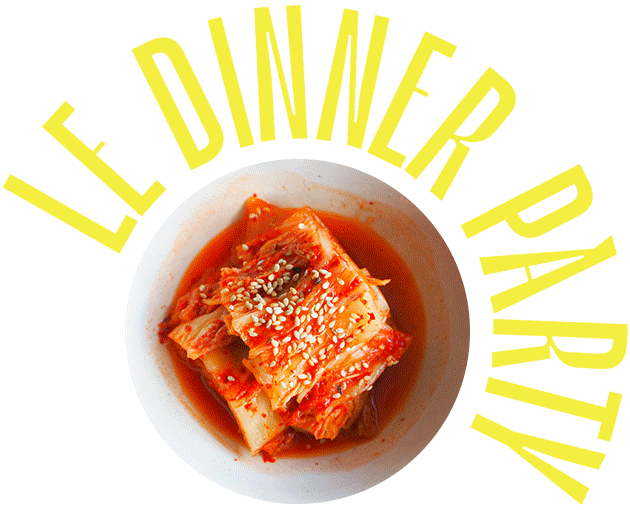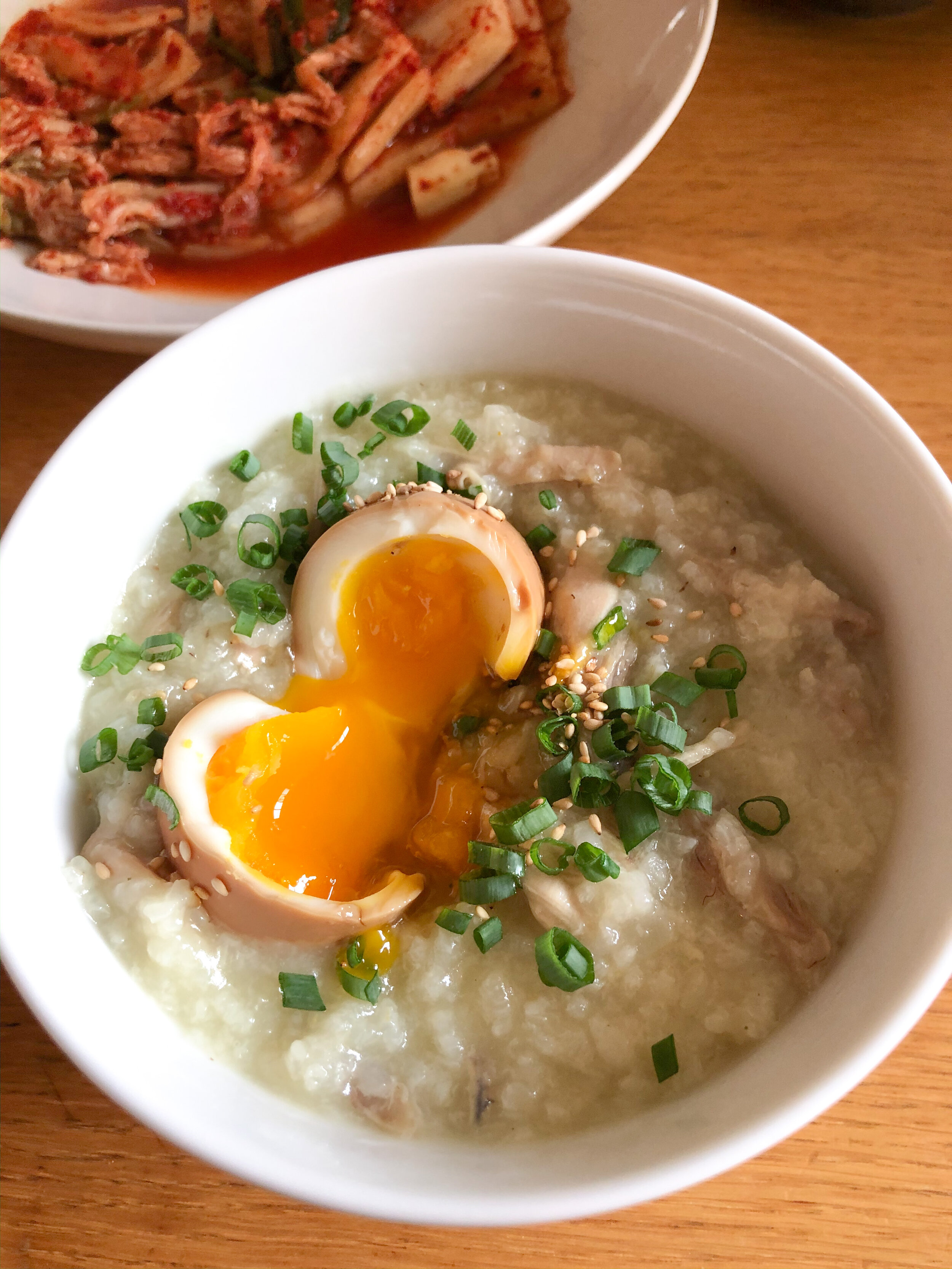Juk is a Korean rice porridge (similar to Chinese Congee) made by simmering soaked rice until it bursts and releases its starches to make a beautiful thick porridge. There are countless varieties of Juk. My favorites are abalone juk that my aunties would make for us when we visited South Korea, and a ground rice and pine-nut version that my mom makes. Koreans make juk for breakfast or for their loved ones who are feeling sick because it is very easy to digest and comforting. Juk is gentle AF, and we all need gentle shit right now.
I made dakjuk (dak translates to chicken in Korean) for dinner on Sunday and got some requests to post the recipe. So, here she is! My version has a soy-marinated egg with a runny yolk because j’adore eggs and I believe they are little nuggets of opulence. In addition to being a benevolent queen, I’m also a practical queen. I designed this recipe two ways: using leftovers from my Korean Glamour Chicken Soup recipe, or as it’s written. I’ve included instructions for both versions below. You’re welcome, and I hope you make this gentle beauty.
Recipe Type: Comfort Food
Time: 2 hours
Servings: 4
Ingredients
2 whole raw chicken legs (thigh and drumstick attached with skin and bones)*
4-5 cups chicken stock*
1 cup short grain rice or glutinous rice
1 scallion thinly sliced
4 cloves peeled garlic
½ onion diced into ½ inch pieces
Sesame seeds
Optional
4 eggs
½ cup soy sauce
*You can make this recipe the day after you make Korean Glamour Chicken Soup with leftover dark meat (legs and thighs) and broth.
Equipment (Heading 2)
Medium Pot
Small Pot
Various mixing bowls
Fine mesh sieve
Instructions
Soak Rice
Place rice into the fine mesh sieve and rinse under cold water until the water runs clear. Add to a medium bowl and cover with around 2 inches of water. Soak for one to two hours.
Prepare and Gather Ingredients
Peel garlic, dice onion into small cubes, and slice scallions. Set ingredients aside in small prep bowls (or whatever you have).
Prepare Eggs
Bring a small pot of water to boil over high heat for the eggs. Once the water boils, lower the heat to medium until the water is boiling steadily, but not aggressively. With a spoon, carefully lower each egg into the water and boil for seven minutes. This should, in theory, yield a soft boiled egg with a runny yolk. I recommend testing one egg first to ensure that you achieve your ideal runniness of egg yolk. If your test egg is too runny, then add 30 seconds-one minute to your cook time. If it’s overcooked, then subtract 30 seconds-one minute.
Once the egg has cooked, remove the egg and place into a bowl of ice water and let sit for approximately five minutes.
Peel the eggs and place into a shallow small bowl with soy sauce to marinate at room temperature. If the soy sauce doesn’t cover the egg that is totally fine, simply rotate the egg every 15 minutes or so.
Marinate for one to two hours maximum. Otherwise the eggs will become too salty.
Cook Juk
Place the chicken legs and garlic into a medium pot. Add the chicken stock and bring to a boil over high heat. Once the stock boils, lower the heat to medium-low and cook the chicken legs with a gentle simmer for an hour, or until the meat easily falls off the bone. Keep the pot covered so the chicken stock maintains its volume. The chicken legs will give off beautiful fat in the stock. Leave it. The fat is delicious chicken-y flavor.
Remove the legs and let cool on a plate.
If you are using leftover chicken and broth from Korean Glamour Chicken soup, you can skip the previous steps, and reheat the broth in a medium pot. Shred about one cup of the leftover dark meat (legs and thighs), discard skin and bones, and set aside.
Drain the soaked rice with the fine mesh sieve, and add the drained rice and diced onions to the pot of gently boiling stock. Adjust the heat and bring to a gentle of simmer. Stir occasionally.
When the chicken legs are cool enough to handle, shred the chicken into big pieces with your hands (or if too hot, use two forks). Toss the skin and bones. Add the chicken to the juk.
Continue cooking the dakjuk for 20-30 minutes stirring occasionally. You’ll notice the dakjuk thickening as the rice cooks longer. Towards the last ten minutes of cooking, adjust the thickness of the juk to your personal preference: To thicken, continue cooking and boil off the liquid. If the dakjuk is too thick, add water or extra stock (if you have) to loosen.
Once the dakjuk is cooked to your liking, season to taste with salt and pepper.
Ladle the dakjuk into bowls and top with sliced scallions, one soy cured egg per person (remove the egg from the soy sauce - save the soy sauce for another batch of eggs), and sesame seeds. Serve with kimchi.
If you have leftovers, reheat on the stove over low heat. Add some water to loosen. The juk will continue to loosen as it warms.

